Discover the Best Board Games for Every Player
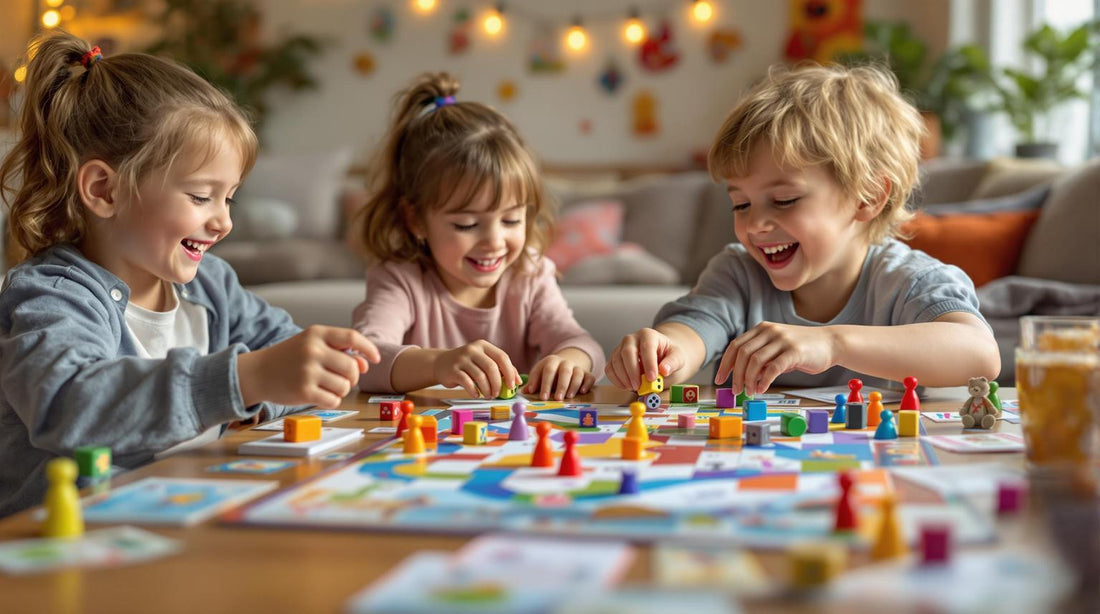
Top 7 Storytelling Games for Kids Under 6
Storytelling games are a fun way to help kids under 6 build language, creativity, and social skills. Here are 7 top games designed to spark young imaginations:
- Story Cubes: Roll dice with pictures to inspire stories. Great for ages 4–6.
- Once Upon a Time Card Game: Use cards with story prompts to create tales. Ages 4+ with parental help.
- Tell Tale: Picture cards guide collaborative storytelling. Perfect for ages 4–6.
- Rory's Story Cubes: Actions: Action-themed dice encourage movement-based stories. Ages 3–6.
- Tall Tales: Use character and setting cards to build stories. For ages 4–6.
- Silly Story Laboratory: Mix and match story elements like a "scientist." Ages 3–6.
- Storymatic Kids: Draw character and situation cards to create unique stories. Ages 3–6.
These games use simple visuals, prompts, and interactive rules to make storytelling accessible and fun for young children. Parents can adjust gameplay to suit different age groups, ensuring everyone can join in.
Quick Tip: Create a cozy storytelling space, use props or drawings to bring stories to life, and keep sessions short (15–30 minutes) based on your child's age.
1. Story Cubes
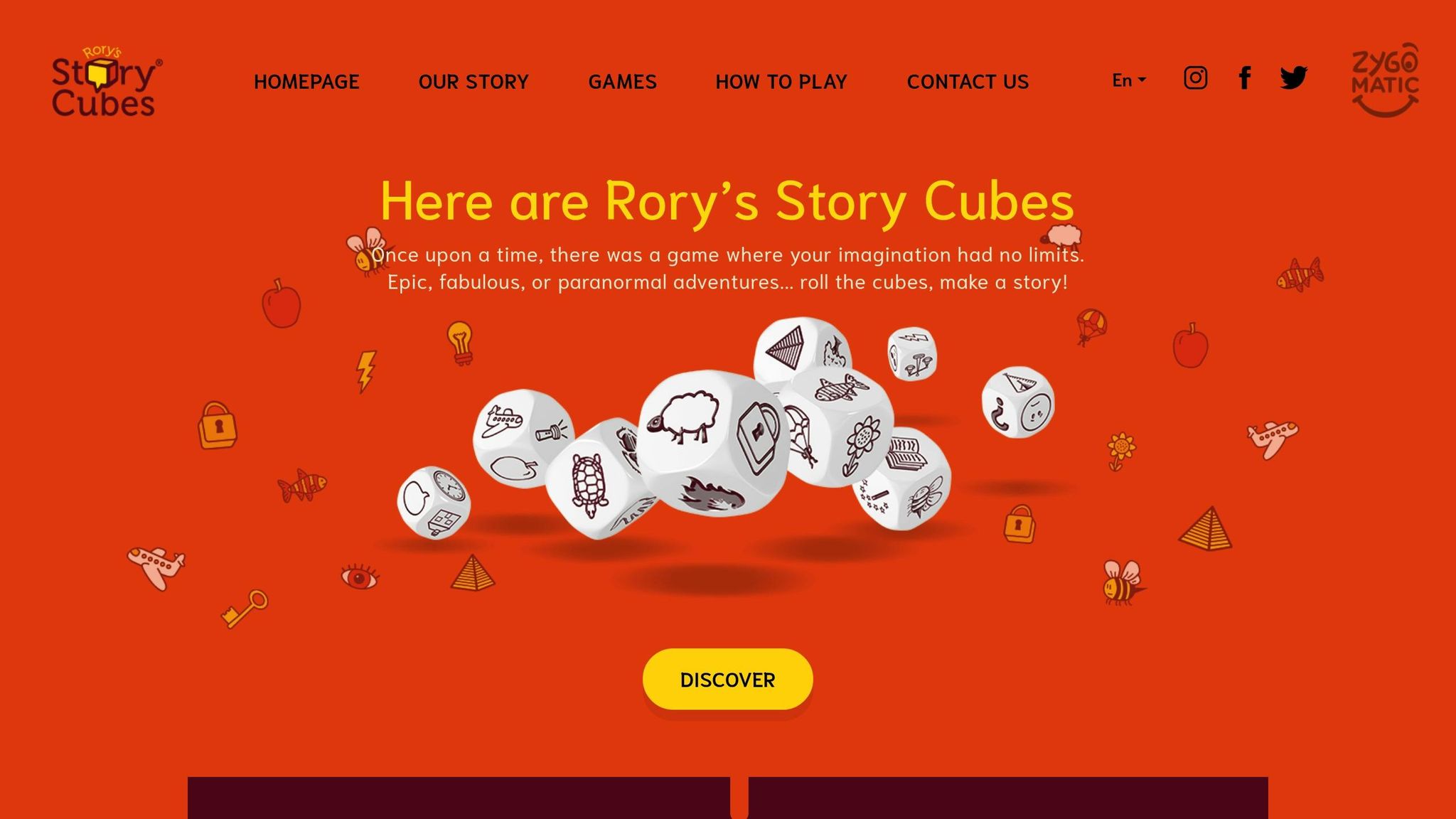
How the Game Works
Story Cubes is a storytelling game that uses dice featuring unique images. Each die has different pictures, ranging from objects to emotions. Players roll the dice and use the images as inspiration to craft a story. This visual method makes it a great choice for younger children who are just beginning to explore storytelling.
Suitable Age Range
This game is designed for kids aged 4 and up, but it’s especially effective for 4–6-year-olds when parents lend a hand. The visual nature of the dice allows even non-readers to join in. You can adjust the number of dice used to match the child’s skill level.
Learning Benefits
Playing Story Cubes helps kids build a variety of important skills, such as:
- Language Skills: Kids expand their vocabulary by describing the images.
- Logical Thinking: It encourages them to structure stories in a logical order.
- Image Interpretation: Improves their ability to understand and connect visual cues.
- Creative Thinking: Challenges them to link unrelated images into a cohesive story.
Simple Rules
- Roll the dice.
- Pick an image to begin the story.
- Use the remaining images to continue the narrative.
- Wrap up the story by incorporating all the images.
For younger kids, you can simplify by using fewer dice, taking turns, or asking guiding questions to help them build their story.
How To Play Rory's Story Cubes
2. Once Upon a Time Card Game
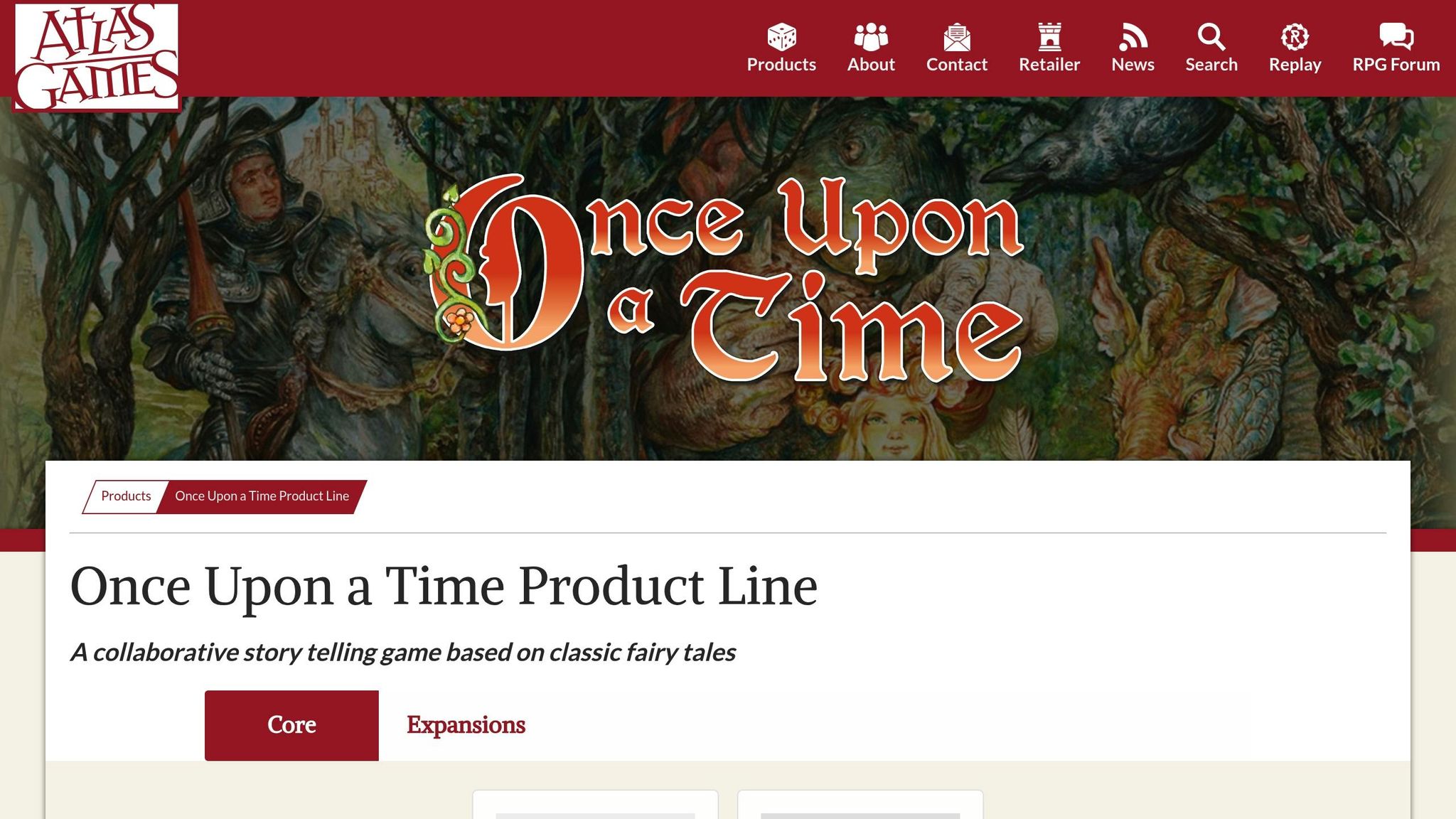
Once Upon a Time is a storytelling card game that sparks imagination and encourages kids to create their own tales. Similar to Story Cubes, it uses prompts to guide storytelling. While designed for ages 6 and up, it can also work for 4-year-olds if parents adjust the gameplay by selecting simpler cards, focusing on key parts of the story, and offering guidance.
Age Suitability
Parents can make the game suitable for younger kids by choosing simpler cards, using a smaller deck, and actively helping shape the story.
Skills Developed
- Vocabulary: Introduces new words through colorful and engaging illustrations.
- Sequential Thinking: Helps kids learn to organize stories in a logical order.
- Social Skills: Encourages turn-taking and active listening during group play.
- Memory: Strengthens the ability to recall story details and elements.
- Emotional Intelligence: Allows children to explore emotions and character motivations.
With a little adjustment, this game becomes a fun and engaging way for younger kids to dive into storytelling.
3. Tell Tale
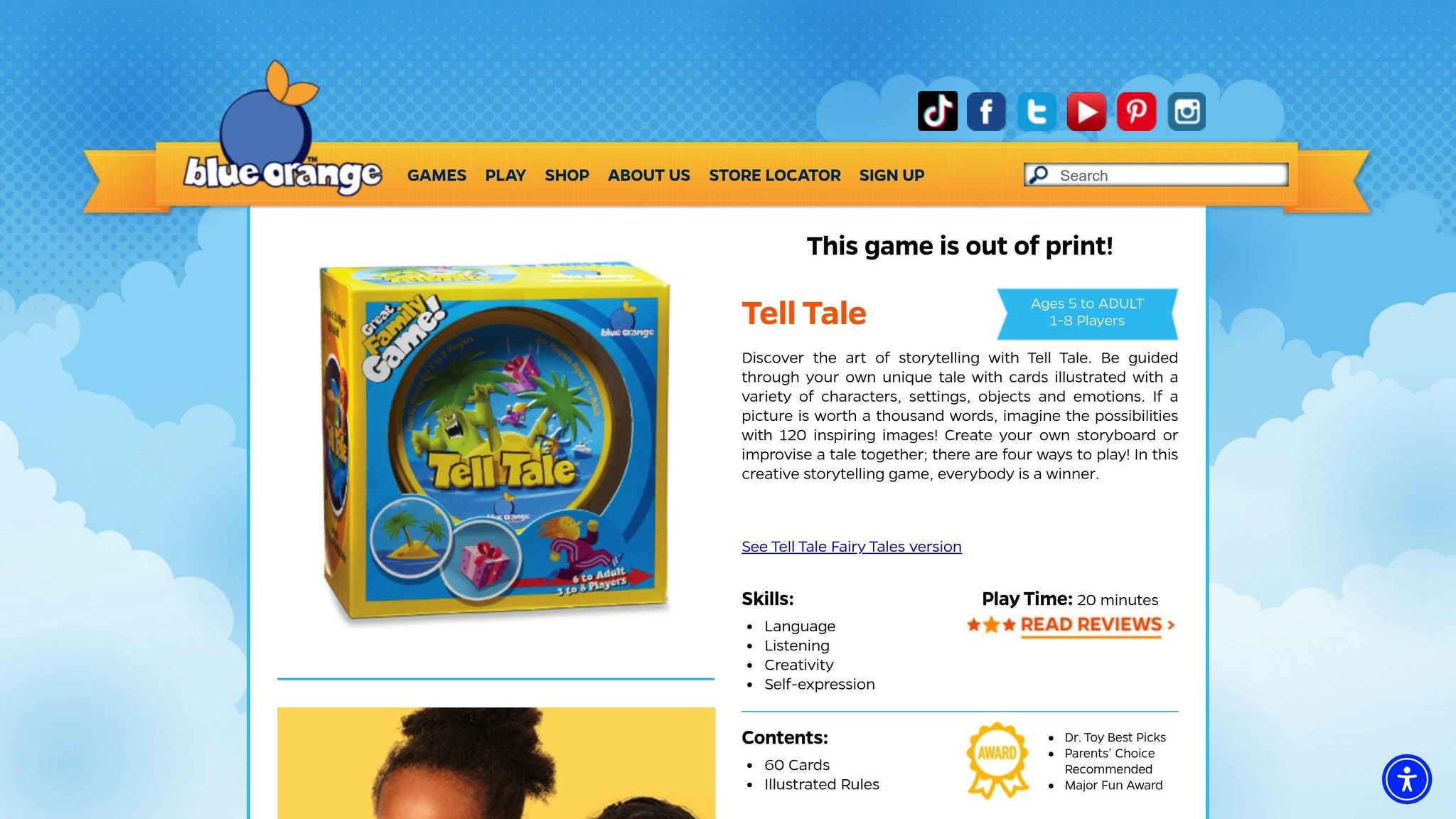
Tell Tale builds on visual prompts from earlier games, offering a card-based way to spark collaborative storytelling.
Basic Gameplay
This game uses picture cards to inspire kids' imaginations. Players draw cards and use the images to create a shared story, helping them grow their vocabulary while having fun.
Age Range
Tell Tale is best suited for kids aged 4–6. Its picture-based format makes it easy for pre-readers and early readers to join in.
Benefits for Kids
Playing Tell Tale helps kids develop important skills, such as:
- Language Skills: Encourages vocabulary growth and verbal expression.
- Creative Thinking: Inspires imaginative storytelling and narrative building.
How to Play
- Prepare the Cards: Shuffle the deck and place it face down in the center.
- Draw Cards: Each player picks a few cards. Adjust the number based on the players' ages and abilities.
- Start the Story: The youngest player begins by choosing a card and starting a story inspired by its image.
- Take Turns: Players continue the tale by adding their own cards and ideas.
- Wrap It Up: Keep going until all players have used their cards to complete the story.
For younger kids, parents can simplify the game by using fewer cards and giving gentle prompts to help connect ideas. Its adaptable rules make it great for family game nights or classroom activities.
sbb-itb-1ed942f
4. Rory's Story Cubes: Actions
Rory's Story Cubes: Actions brings storytelling to life by centering on movement and activity. This set includes nine dice, each featuring action-based images to spark engaging and dynamic stories.
How to Play
Roll all nine dice to reveal actions like running, jumping, or dancing. Use these prompts to create a story that ties the actions together. For younger kids, start with just 3–4 dice and add more as they get the hang of it. It's a fun way to introduce preschoolers to storytelling with an active twist.
Target Age Group
This version is perfect for kids aged 3–6, especially energetic 4- and 5-year-olds who enjoy physical play. The action-focused images connect with their love for movement and help channel that energy into imaginative storytelling.
Educational Benefits
Rory's Story Cubes: Actions helps kids build several key skills:
- Movement Awareness: Encourages understanding and describing different actions.
- Vocabulary Growth: Introduces dynamic, action-based words.
- Story Sequencing: Teaches kids how to structure stories around actions.
- Memory Practice: Connects physical actions to storytelling, boosting recall.
Quick and Portable
Setup is quick and easy - just grab the nine dice, a flat surface, and an optional container. It's a great option for short play sessions, keeping up with young kids' attention spans. Plus, the compact carrying case fits in a pocket, making it a go-to travel game for storytelling on the go, whether during playdates or bedtime.
5. Tall Tales
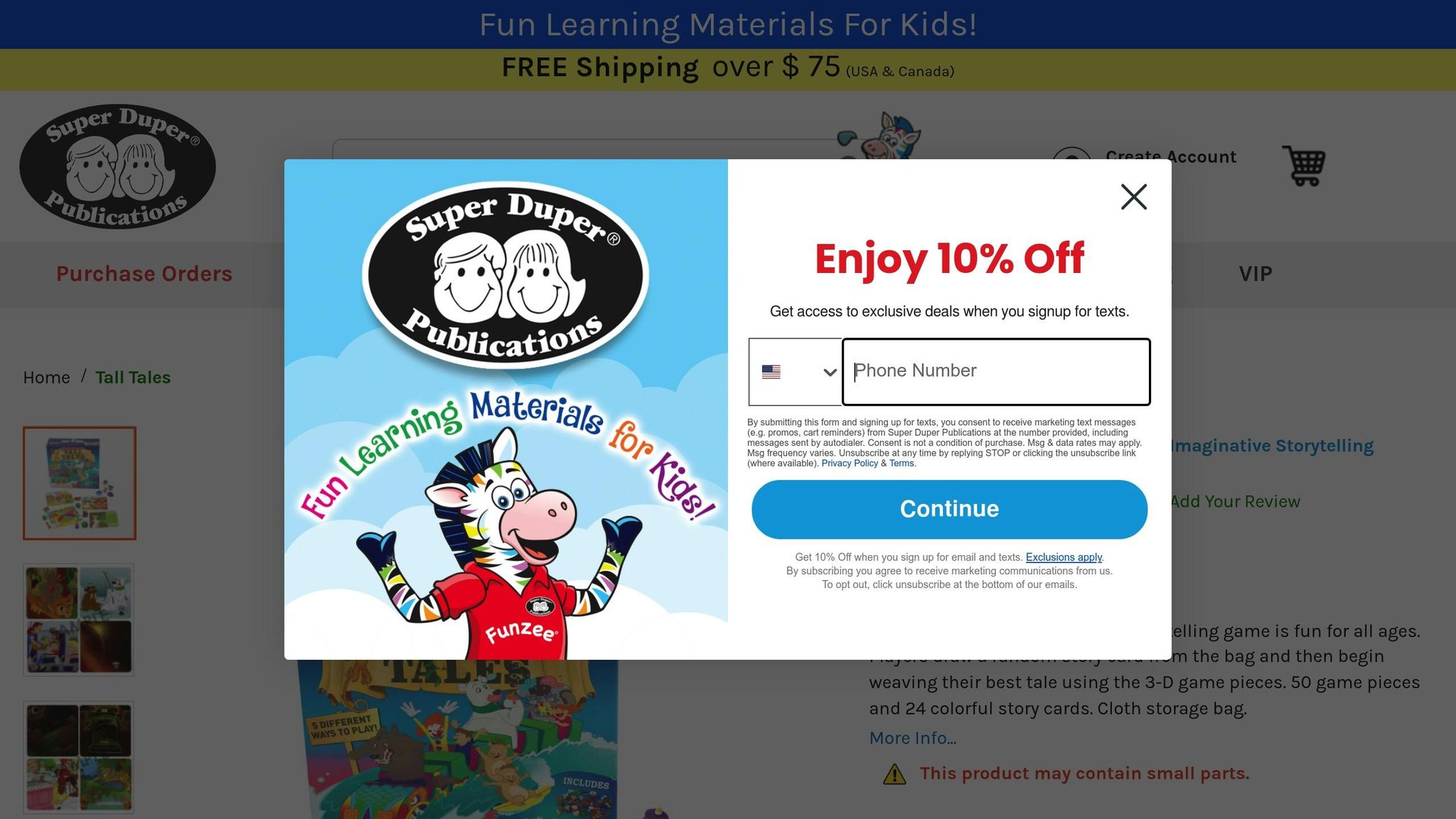
Game Overview
Tall Tales is a storytelling board game that uses character cards and prompts to inspire imaginative stories. The cards feature vibrant illustrations of characters, settings, and objects, providing endless possibilities for crafting unique narratives.
Age Recommendations
Created for kids aged 4–6, Tall Tales balances structure with room for creativity. Its colorful, visual design is perfect for pre-readers, making it easy for them to dive into storytelling at their own speed.
Learning Goals
Tall Tales helps kids grow in several important areas:
- Language Skills: Builds vocabulary through storytelling
- Imagination: Sparks creative thinking and story creation
- Social Interaction: Teaches turn-taking and listening while encouraging teamwork
Basic Rules
Players take turns building a story. One player begins with a character card and an opening line, and the next adds a card and a new detail to the story. This collaborative gameplay encourages creativity while fostering teamwork as the story unfolds.
6. Silly Story Laboratory

Main Gameplay
Silly Story Laboratory combines storytelling with a fun, experimental twist. Players use a set of story element cards featuring characters, locations, and objects. The lab-inspired theme encourages kids to mix and match these elements like little scientists. Each round kicks off with players drawing three cards.
Age Match
Perfect for kids aged 3–6, this game features large, easy-to-hold cards with bright, clear images, making it accessible even for non-readers. Its structure aligns with preschoolers' developmental stages, offering a balance of guidance and creativity through short storytelling activities.
Skills Developed
This game helps kids develop important skills, including:
- Verbal Expression: Creating sentences and describing imaginative scenarios.
- Sequential Thinking: Organizing story elements in a logical flow.
- Creative Problem-Solving: Connecting different elements in inventive ways.
- Curiosity: Exploring the playful lab theme and experimenting with ideas.
Quick Start Guide
- Set Up: Lay out the laboratory mat and shuffle the story element cards.
- Draw Cards: Each player picks three cards - one for a character, one for a place, and one for an object.
- Create Story: The first player uses their cards to start a story.
- Pass the Test Tube: The next player continues the story from where it left off.
- Complete the Story: Share and enjoy the full story once everyone has contributed.
This creative spin on storytelling adds a fresh layer of fun to traditional narrative games. For more family-friendly games like this, check out Brain Games at Brain Games.
7. Storymatic Kids
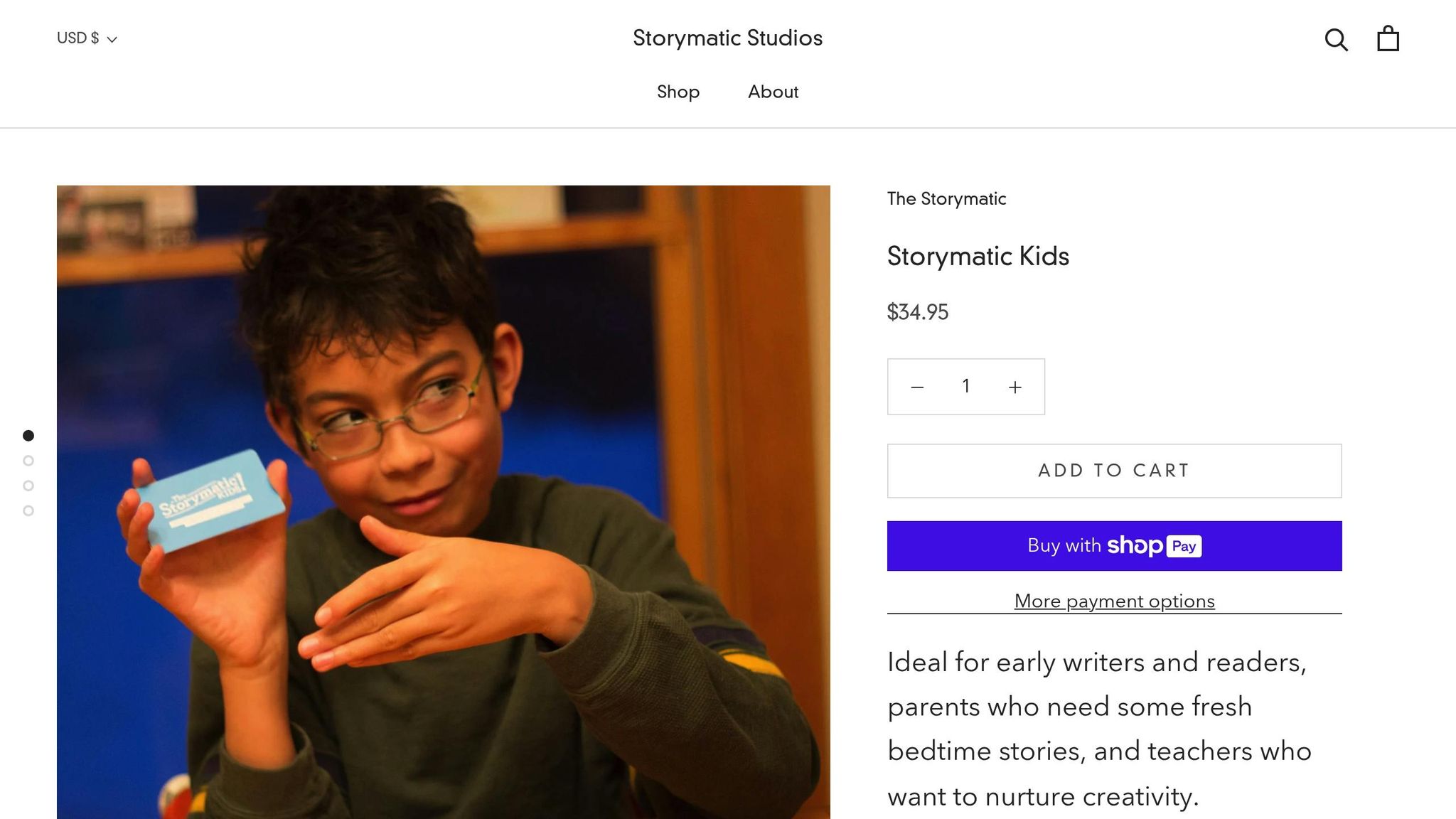
Game Description
Storymatic Kids takes storytelling to the next level with its dual-deck system. One deck features character cards (golden), while the other includes situation or object cards (copper). Players draw from each deck to spark their imaginations and create fun, original stories using simple word prompts and colorful visuals.
Age Fit
Perfect for kids aged 3–6, this game works well across different skill levels. For younger children (3–4 years old), parents can pick a few cards in advance and use them to spark conversations. Older kids (5–6 years old) can dive into a larger selection of cards to create more detailed and imaginative stories. The cards are sturdy and easy for little hands to handle.
Learning Points
- Language Skills: Introduces new vocabulary in fun and unexpected ways.
- Storytelling Basics: Helps kids build narratives with a clear beginning, middle, and end.
- Teamwork: Encourages sharing stories and taking turns, promoting social interaction.
Getting Started
Shuffle each deck separately, and have kids draw one character card and one situation card. For younger players, start with just one card to keep it simple, then add more elements or encourage group storytelling as they get more comfortable. This setup makes storytelling easy and fun for all skill levels.
Find Storymatic Kids and a parent guide with extra variations at Brain Games.
Summary and Tips
Looking to make storytelling at home more engaging? These practical tips can help you create fun and meaningful storytelling sessions for the whole family. Storytelling games not only spark creativity but also bring families closer together.
Setting the Scene
Create a cozy storytelling spot with comfy cushions or a small reading nook. Keep the games within easy reach and schedule regular "story time" sessions. For younger kids (under 4), aim for 15-20 minutes, while children aged 5-6 can enjoy up to 30 minutes. A consistent routine helps kids look forward to these moments, building on the prompts provided by storytelling games. Adjust the activities to suit the age and abilities of your children.
Tailoring Games to Age Groups
| Age Group | Game Adjustments | Parent's Role |
|---|---|---|
| 3-4 years | Use single cards or dice, focus on simple character traits | Guide the story, ask questions to inspire ideas |
| 4-5 years | Combine 2-3 story elements, introduce simple plots | Co-create the story, assist with transitions |
| 5-6 years | Use full game rules, explore more detailed plots | Encourage discussions, support peer storytelling |
Making Stories Come Alive
Interactive elements can make storytelling even more exciting. Try these ideas:
- Act out the story: Use props like scarves or stuffed animals to bring characters to life.
- Draw the story: Have paper and crayons ready so kids can illustrate their favorite moments.
- Record your stories: Use a smartphone to save your child’s stories, creating a digital keepsake.
Adding an Educational Twist
Sneak in learning by asking open-ended questions about the characters’ feelings, choices, and outcomes. This approach helps kids think critically while having fun.
Overcoming Common Hurdles
If storytelling feels tricky, these tips can help:
- Start the story yourself: Create the opening scene, then let your child take over.
- Use familiar settings: Begin with places your child knows, like their room or a favorite park.
- Simplify the process: Focus on one element at a time - start with a character, then add a setting, and finally introduce the action.
Celebrate every creative effort your child makes. For more storytelling games and family-friendly activities, check out Brain Games, a go-to source for play that’s both fun and educational.






